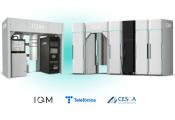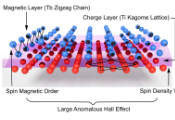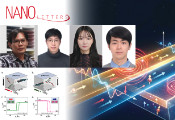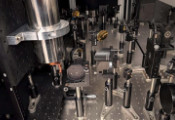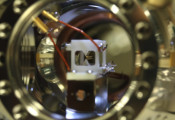RIT Receives $3.97 Million Award to Improve Quantum System Networking Initiatives
September 19, 2024 -- Rochester Institute of Technology has been awarded $3.97 million from the Northeast Regional Defense Technology Hub (NORDTECH) to advance quantum chip technologies. It is part of a four-year award that could see the university attain nearly $10 million as the research progresses. The focus will be on scaling the power of quantum systems by entangling them across a photonic network.
RIT is part of the Microelectronics Common/ Northeast Regional Defense Technology Hub (NORDTECH), one of several networks launched since the CHIPS and Science Act in 2022. Through the hub, the university will partner with several top labs in academia and government for the Heterogeneous Quantum Networking project, an initiative with the Air Force Research Laboratory - Information Directorate, Yale University, Duke University, NY Creates and AIM Photonics.
Project partners will develop a heterogeneous quantum network that aims to link ion-based qubits and photonic-based qubits at high speed using photonic chips. This network enables different qubit types to work together, enhancing quantum entanglement applications like storage, sensing, and processing—technology necessary to improve processing power in critical information areas such as navigation, communication, and computation.
The team aims to overcome current limitations of quantum networks, said Stefan Preble, principal investigator on the interdisciplinary team and professor in RIT’s Kate Gleason College of Engineering. “Single types of qubits have been networked together but the overall performance has been limited. By building a network using a variety of qubits—a heterogeneous quantum network—the advantages of the different types of qubits can be leveraged for their specific functionalities, such as, processing, sensing or storage,” said Preble, director of RIT’s microsystems engineering doctoral program.
Different types of matter and energy are being used to realize qubits. Managing unpredictable, but powerful quantum behaviors has it challenges. To address these, the project team will use photonic chips that efficiently convert wavelengths while preserving the quantum information. Ultimately, the chips will be wavelength translators between the network and ion qubits.
Preble and colleagues from the AFRL and AIM Photonics have been working together to build the high performance photonic chip technologies required for the project. Specifically, in 2020 they produced a fully integrated quantum photonics wafer for the Department of Defense. This work provides the foundation for the current project to realize a heterogeneous quantum network.
“Photonics chips provide a scalable platform for realizing high performance quantum networking and interfaces to ions. The chips will enable many ion qubits to be multiplexed together, enabling high-speed entanglement across the quantum network,” said Preble. “With NORDTECH, we have assembled a team that utilizes photonic chip technologies and brings together leading experts to advance quantum networking.”
NORDTECH is one of eight technology hubs across the country that connects a network of academic, research, defense and industrial organizations contributing capabilities in key areas of semiconductor development. The field is broad and encompasses development in high-need areas from artificial intelligence to quantum technologies with the intent of accelerating the growth of U.S.-based semiconductor resources, including those required for advancing defense system technologies.
“RIT takes great pride in being at the forefront of the use of quantum and integrated photonics to help transform information science, microelectronics, and the semiconductor industry,” said Ryne Raffaelle, vice president of Research and associate provost at RIT. “We are proud to be working with our partners in the Department of Defense Microelectronic Commons, NORDTECH Hub and the Air Force Research Lab on future quantum networks ensures that we will continue to play an important role in these areas and the future of our nation’s industrial base in these critical technologies.”





